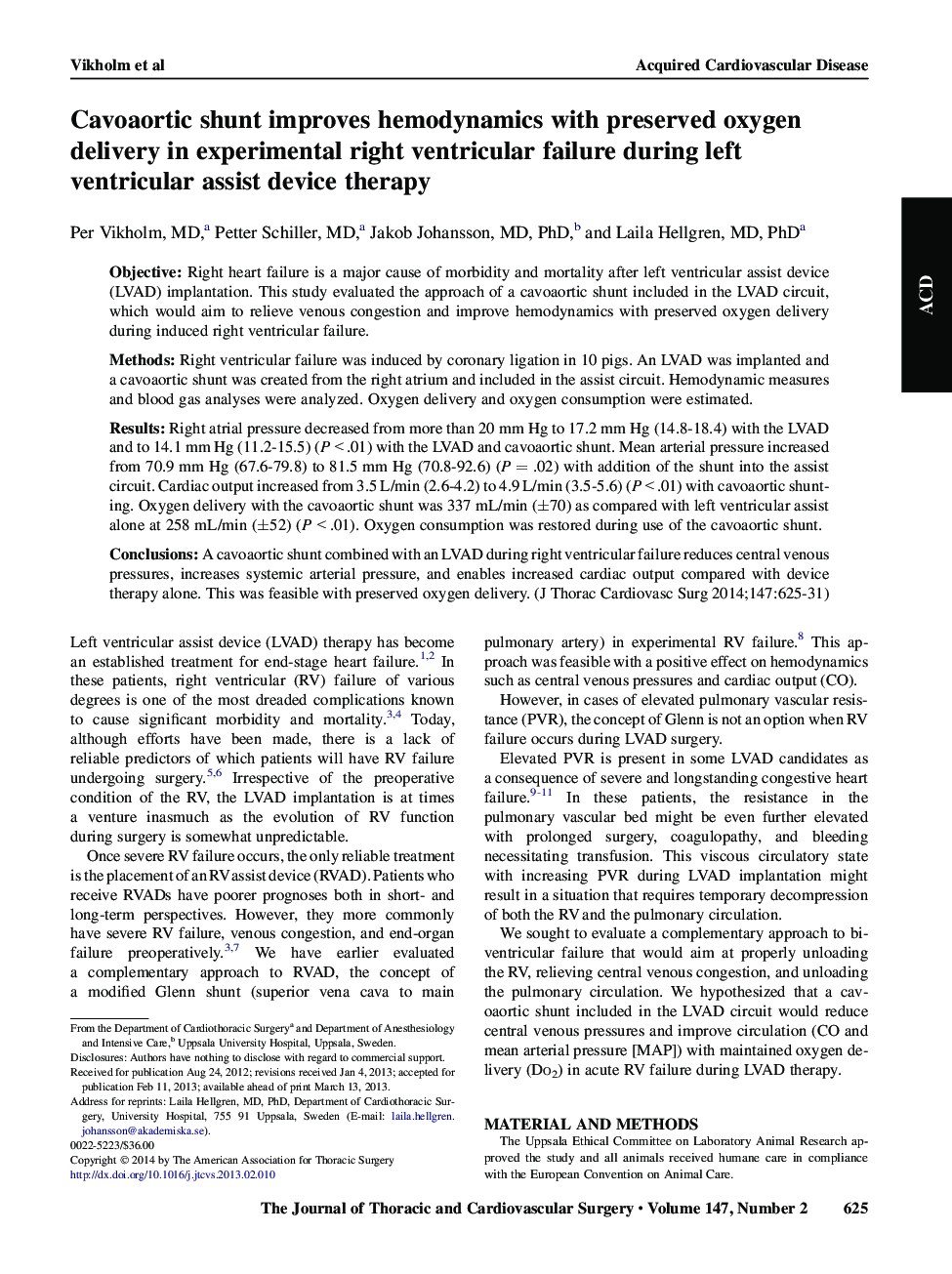| Article ID | Journal | Published Year | Pages | File Type |
|---|---|---|---|---|
| 2980210 | The Journal of Thoracic and Cardiovascular Surgery | 2014 | 7 Pages |
ObjectiveRight heart failure is a major cause of morbidity and mortality after left ventricular assist device (LVAD) implantation. This study evaluated the approach of a cavoaortic shunt included in the LVAD circuit, which would aim to relieve venous congestion and improve hemodynamics with preserved oxygen delivery during induced right ventricular failure.MethodsRight ventricular failure was induced by coronary ligation in 10 pigs. An LVAD was implanted and a cavoaortic shunt was created from the right atrium and included in the assist circuit. Hemodynamic measures and blood gas analyses were analyzed. Oxygen delivery and oxygen consumption were estimated.ResultsRight atrial pressure decreased from more than 20 mm Hg to 17.2 mm Hg (14.8-18.4) with the LVAD and to 14.1 mm Hg (11.2-15.5) (P < .01) with the LVAD and cavoaortic shunt. Mean arterial pressure increased from 70.9 mm Hg (67.6-79.8) to 81.5 mm Hg (70.8-92.6) (P = .02) with addition of the shunt into the assist circuit. Cardiac output increased from 3.5 L/min (2.6-4.2) to 4.9 L/min (3.5-5.6) (P < .01) with cavoaortic shunting. Oxygen delivery with the cavoaortic shunt was 337 mL/min (±70) as compared with left ventricular assist alone at 258 mL/min (±52) (P < .01). Oxygen consumption was restored during use of the cavoaortic shunt.ConclusionsA cavoaortic shunt combined with an LVAD during right ventricular failure reduces central venous pressures, increases systemic arterial pressure, and enables increased cardiac output compared with device therapy alone. This was feasible with preserved oxygen delivery.
